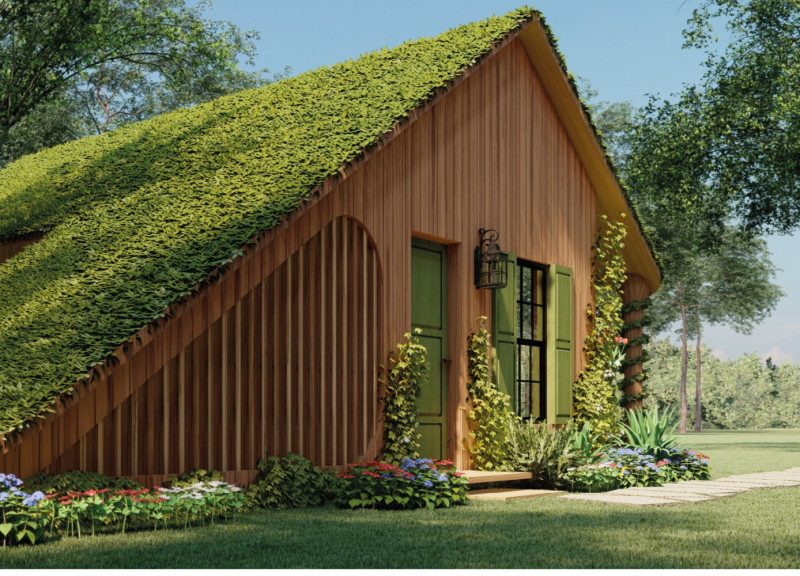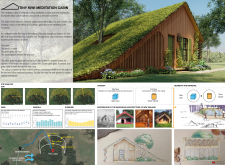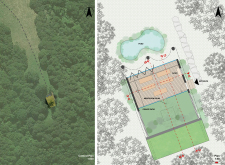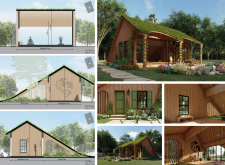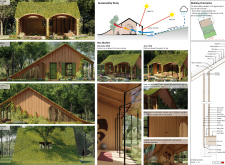5 key facts about this project
The Tiny Kiwi Meditation Cabin sits in a forested area, designed to encourage meditation and introspection. This structure seeks to connect its users with nature while incorporating elements of local culture. The overall design focuses on creating a peaceful space where visitors can find tranquility and reflection away from the distractions of everyday life.
Design Concept
The concept behind the cabin emphasizes the promotion of alpha and theta brainwave states, which are important for relaxation and creativity. The structure combines vaulted wood forms with glass and cylindrical voids. This thoughtful arrangement helps guide users through the surrounding forest environment before they enter the cabin. The design encourages an immersive experience that engages the senses and prepares the mind for meditation.
Solar Orientation and Performance
Careful consideration is given to the orientation of the cabin to maximize natural light. The north-facing glass walls allow for cross-ventilation during the warmer months, creating a comfortable atmosphere. In winter, the use of double-pane glass alongside Rockwool insulation ensures that the space retains heat efficiently. This approach demonstrates a commitment to maintaining comfort while minimizing energy use throughout the year.
Cultural Significance
Elements of Maori culture are woven into the cabin's design. The ceiling features patterns that connect the space to the land's heritage, adding depth to the meditation experience. The altar is located near an east-facing window to ensure it receives morning sunlight. This placement highlights the importance of light in spiritual practices and enhances the overall atmosphere of the cabin.
Sustainability and Integration
The cabin includes a garden roof that contributes to its sustainability. This design feature helps reduce the heat island effect and promotes a harmonious relationship with the natural landscape. Including vegetation allows the cabin to blend in with its setting, enhancing both aesthetics and biodiversity. The selected materials, such as vaulted wood, glass, and Rockwool, support environmentally responsible practices while providing functional benefits.
The design culminates in a focused arrangement of elements where cultural heritage and modern techniques come together. This approach strengthens the meditative experience and offers users a peaceful space for self-reflection and connection to the natural world.


